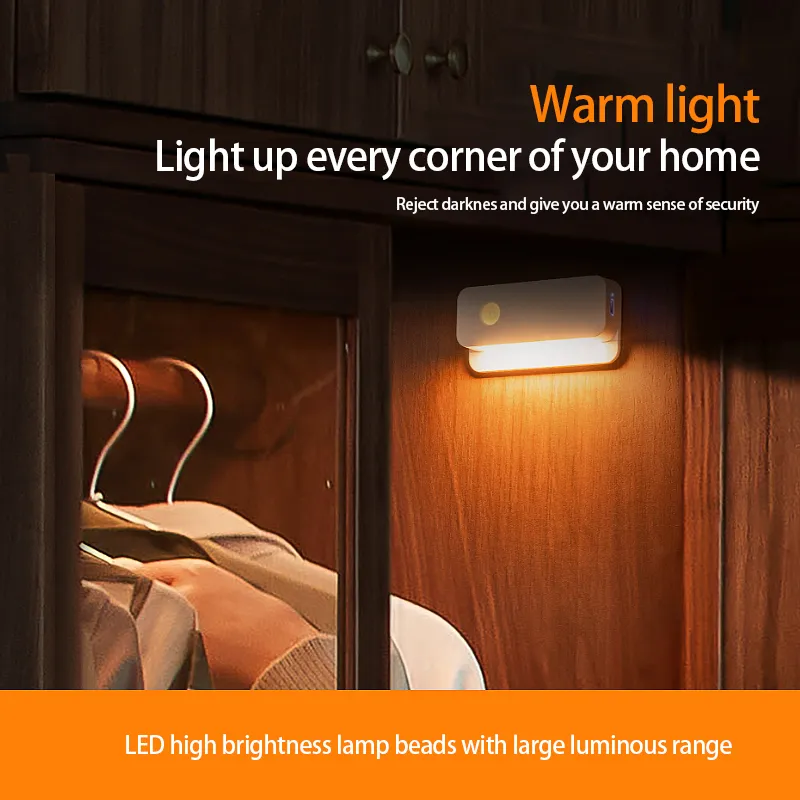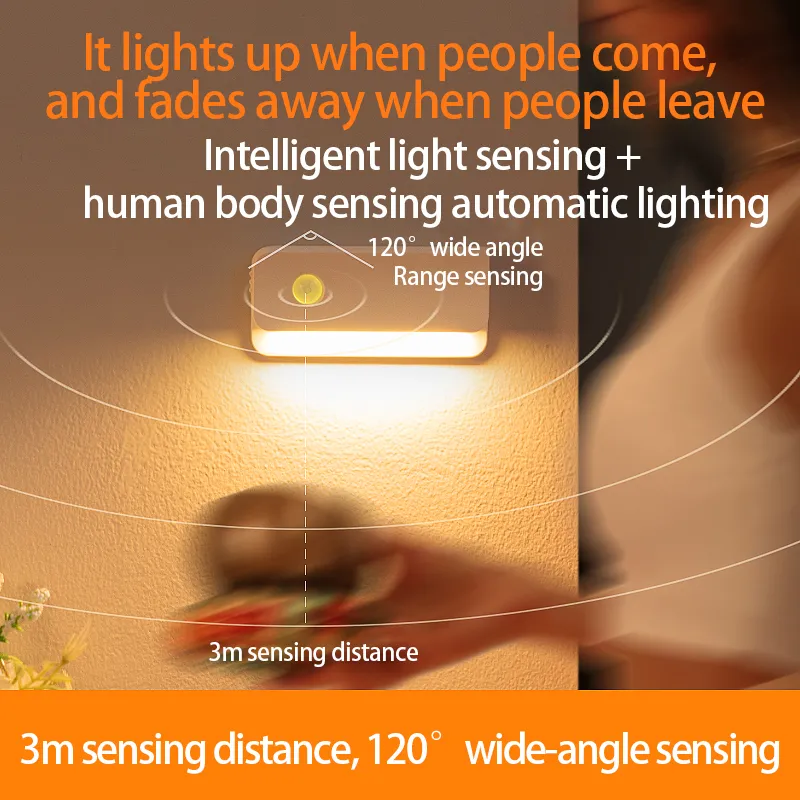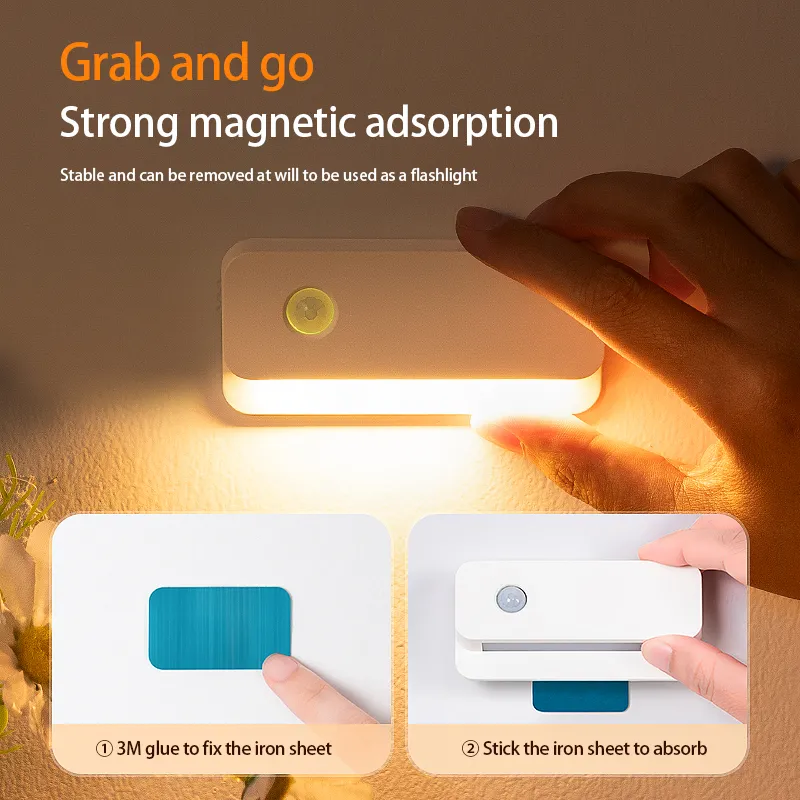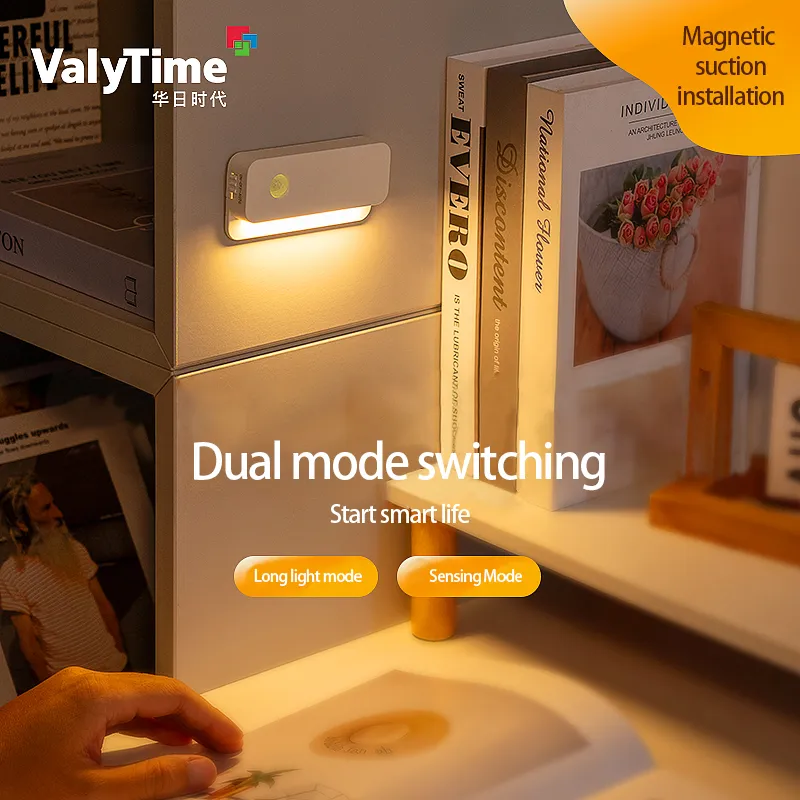How many motion sensor night lights do I need at home?
Now more and more families are starting to use this automatic sensing, energy-saving and environmentally friendly lighting equipment to improve the convenience and safety of life. Faced with a wide range of products on the market, many consumers often ask: "How many motion sensor lights do I need at home?"
This article will focus on this issue and conduct professional and detailed analysis from multiple angles such as the working principle, installation location, layout principles, functional requirements and usage suggestions of motion sensor lights to help consumers scientifically plan the layout of home lighting and ensure that each area can get a suitable lighting experience.

What is motion sensor night lights?
Motion sensor night lights are intelligent lighting devices that use built-in sensors to automatically detect human or object movement and control the switch of lamps accordingly. Unlike traditional manually switched lamps, motion sensor lights use infrared, ultrasonic or photosensitive sensor technology to automatically turn on the lights when activity is detected and automatically turn off when no activity or sufficient light is available. This intelligent control system not only greatly improves the convenience of lighting, but also achieves energy-saving and environmental protection effects.
Working principle of motion sensor night lights
The core of motion sensor night lights lies in its sensor module. Common sensors include:
● Infrared sensor: By detecting the infrared heat emitted by the human body, it determines whether someone has entered the sensing area. Once human activity is detected, the sensor quickly triggers the circuit and lights up the LED light.
● Ultrasonic sensor: Uses the principle of ultrasonic emission and echo to detect the movement changes of objects in the space. When motion is detected, the system responds immediately and starts the lamp.
● Photosensitive sensor: By monitoring the intensity of ambient light, it realizes automatic dimming and timed switching functions. Usually, photosensitive sensors are used in combination with motion sensors to avoid wasting electricity when there is sufficient light.
The cooperation of these sensors enables motion sensor night lights to achieve precise control in different environments, thus providing families with convenient and energy-saving lighting solutions.

How many motion sensor night lights do I need at home?
The lighting needs of different areas in the home are different. Reasonable planning of the installation quantity and layout of motion sensor night lights can maximize their role. The following analyzes the specific needs of motion sensor lights from the main areas such as living room, bedroom, corridor, kitchen, bathroom, stairs, storage room, etc.
Living room and family public area
As the main activity area of the family, the living room needs to ensure sufficient brightness and not be too glaring. Using motion sensor night lights in the living room can not only improve convenience, but also save unnecessary energy consumption.
● Lighting requirements: The living room usually has main lights and auxiliary lights. Motion sensor night lights can be used as auxiliary lighting at night, or as local lighting in certain specific areas (such as next to the sofa and reading area).
● Quantity recommendation: It depends on the area of the living room. Generally, a living room with an area of 20 to 30 square meters can be equipped with 1 to 2 motion sensor night lights for auxiliary lighting control; if the living room is large or requires zoned lighting, the number can be appropriately increased.
Bedroom
The bedroom is a rest and private space. Using motion sensor lights can provide gentle lighting and fall prevention at night.
● Lighting requirements: Motion sensor night lights in the bedroom generally require low brightness and softness to avoid affecting sleep, and also provide sufficient guidance when getting up at night.
● Quantity recommendations: Usually, one motion sensor night light can be installed in a bedroom, which can be placed at the head of the bed, next to the wardrobe or in the bathroom. If the bedroom is large or has many partitions, additional motion sensor night lights can be added according to the actual situation.
Corridor and foyer
Corridors and foyer are areas where people in the family frequently pass through, and lighting safety is crucial.
● Lighting requirements: The motion sensor night lights in the corridor are mainly used to ensure traffic safety and avoid falling due to insufficient light at night.
● Quantity recommendations: Corridors are usually long, and it is recommended to install one motion sensor night light every 3 to 5 meters; the foyer can choose 1 to 2 motion sensor night lights according to the area and the number of entrances and exits to ensure that there is enough guiding lighting when entering and leaving the door.
Kitchen
The kitchen environment requires that the lighting should be bright but not dazzling, especially when used at night.
● Lighting requirements: The motion sensor lights in the kitchen can be installed under the cabinets or in the corners of the kitchen to provide local lighting, which is convenient for use at night, while avoiding glare caused by the main light being fully turned on.
● Quantity recommendations: Generally, one motion sensor night light can be installed in the kitchen area to meet the local auxiliary lighting needs; if the kitchen is large or needs to be illuminated in different areas, you can consider increasing the number.
Bathroom
The bathroom is an area with high lighting requirements in the home. It must be waterproof and provide sufficient brightness.
● Lighting requirements: The use of motion sensor night lights in the bathroom can provide gentle, low-brightness auxiliary lighting, avoiding discomfort caused by strong light at night, while improving safety.
● Quantity recommendations: Usually, one motion sensor night light is enough in the bathroom. If the area is large or the functional areas are clear, additional auxiliary lights can be considered.
Stairs and walkways
Stairs and walkways are areas with high safety risks in the home, and the lighting must be uniform and timely.
● Lighting requirements: The motion sensor night lights on the stairs need to be quickly lit when someone passes by to ensure that there is enough light for each step and reduce the risk of falling.
● Quantity recommendations: Stairs are usually equipped with at least one motion sensor night light per floor; walkways can be installed with one motion sensor night light every 2 to 4 meters to ensure uniform lighting throughout the corridor.
Storage rooms and other functional areas
Storage rooms, entrances and other small spaces also require appropriate auxiliary lighting.
● Lighting requirements: The motion sensor night lights in these areas are mainly used to automatically illuminate when opening the storage door or entering a small space to avoid looking for items in the dark.
● Layout quantity recommendation: Usually, one motion sensor night light is configured for each storage room or small compartment to meet the needs.

What are the installation principles of motion sensor night lights?
To determine how many motion sensor lights are needed in a home, it is also necessary to comprehensively consider the installation principles and layout strategies. Reasonable layout can not only ensure uniform lighting, but also avoid false triggering or energy waste caused by overlapping sensors.
Coverage and sensing distance
Different models of motion sensor night lights have different sensing distances and angles. Consumers should read the product instructions carefully when purchasing to understand the maximum detection distance and coverage angle of the sensor.
● Recommendation: When arranging, ensure that the sensing area of each motion sensor night lights can cover the target area to avoid blind spots.
● Note: A sensing distance that is too far may cause false triggering, and a distance that is too close may easily miss motion. Therefore, the direction and position of the lamps should be adjusted during installation.
Energy saving and automatic switch control
The main advantage of motion sensor lights is the automatic switch function, which can automatically turn off when no one is active, saving energy.
● Suggestion: Arrange the motion sensor night lights reasonably to meet the lighting needs while minimizing unnecessary opening.
● Tips: For long corridors or large areas, arrange the motion sensor night lights in reasonable partitions to ensure that the switch time of each lamp meets the actual use needs.
Matching of lamp types
There are many types of motion sensor night lights on the market, including wall-mounted, embedded, desktop, etc. Different types of lamps are suitable for different places.
● Suggestion: Choose appropriate motion sensor lights according to the actual situation of different rooms. For example, wall-mounted motion sensor lights can be selected for corridors and stairs, while portable motion sensor night lights placed on the table or bedside can be selected for bedrooms and living rooms.
● Note: The aesthetics and practicality should be fully considered during installation to ensure that the motion sensor night lights are coordinated with the overall home style.
Sensor installation height and angle
When installing motion sensor night lights, the height and angle of the sensor have a direct impact on the effect.
● Recommendation: In general, motion sensor night lights should be installed at a height of 1.5 to 2.5 meters from the ground to ensure that the sensor can effectively capture human motion signals.
● Adjustment: According to the usage of different areas, adjust the sensor angle appropriately to ensure that it can respond quickly to human motion in key areas.
Regarding the question of "How many motion sensor night lights do I need at home?", the answer is not fixed, but requires a comprehensive assessment based on the actual structure of the family, the area, the frequency of activities, and the personalized needs of the user. Through professional analysis of lighting needs in various areas, we can draw the following conclusions:
● Motion sensor night lights are essential in high-frequency activity areas such as corridors, stairs and toilets, and at least one should be configured at a certain distance or at each key node;
● For areas such as living rooms and bedrooms, 1 to 2 or more motion sensor night lights can be selected as auxiliary lighting according to the area and actual use needs;
● In storage rooms, corners and other small areas, 1 motion sensor night lights can be selected according to specific circumstances;
● When installing, the type, sensing distance, sensitivity, installation height and angle of the sensor should be fully considered to ensure that each motion sensor night lights can play the maximum effect.

At Huari Lighting Co., Ltd, we manufacture top-tier LED lighting products that help businesses enhance their lighting solutions. With 92,000 square meters of production space and a robust monthly output, we are capable of supplying bulk orders of LED lighting, including bulbs, downlights, and panel lights, at competitive prices. Founded in 1996, Huari has built a solid reputation as a reliable manufacturer, offering high-quality products with CE, RoHS, and ERP certifications. Whether you're a wholesaler or looking to purchase LED lighting at discount prices, Huari is your trusted source for customized solutions.
